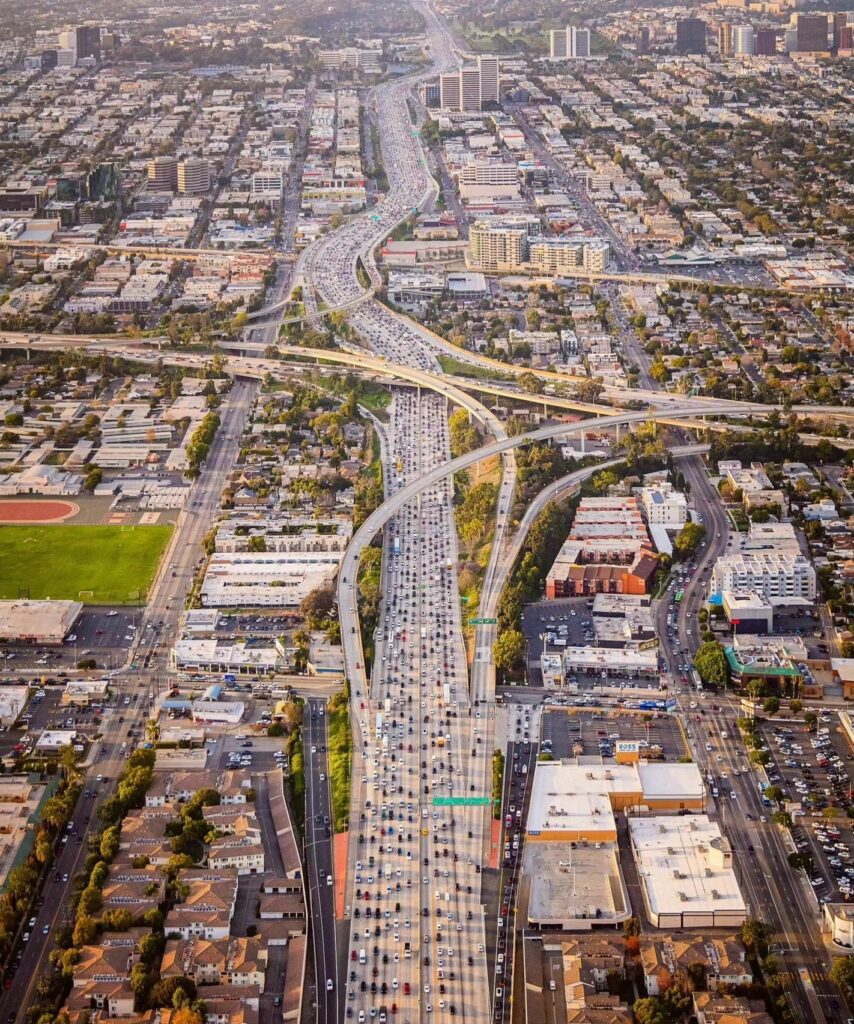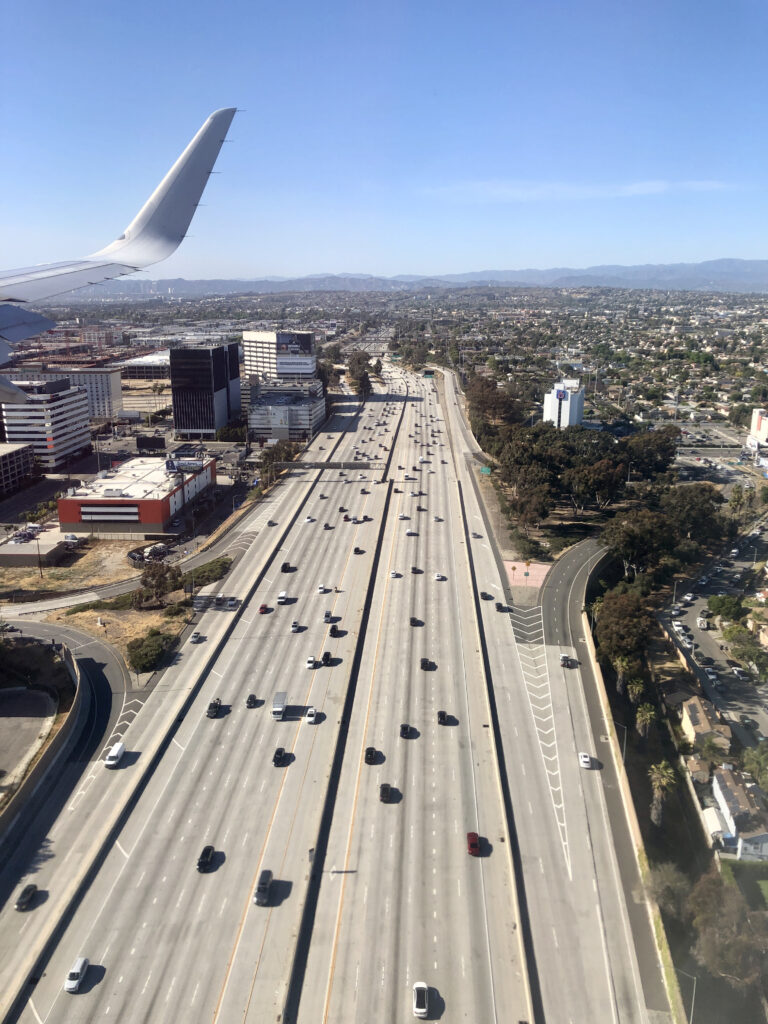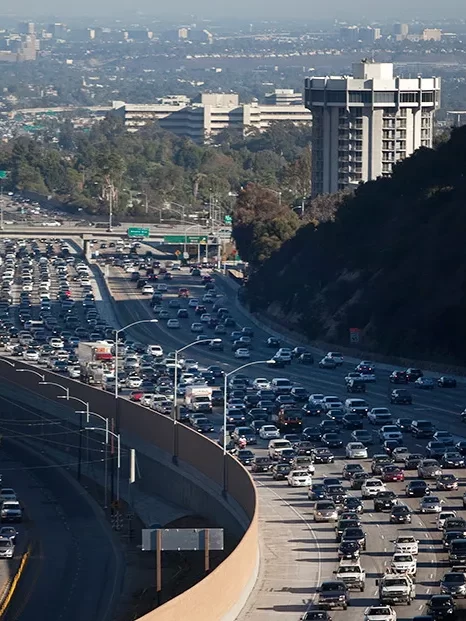Exploring the History and Impact of the 405 Freeway
The 405 freeway over Sepulveda Pass has a fascinating history and has had a significant impact on California. In August 1960, work began on the 405 Freeway connecting western Los Angeles to the San Fernando Valley; it was part of a 12-mile, $20 million project, then the most expensive California highway.

According to the Los Angeles Times, the 405 Freeway in the Sepulveda Pass was a bypass for Sepulveda Boulevard (former Route 7), opened in 1935, and was hailed in the Los Angeles Times as a “new and wondrous highway” over the mountains, vastly superior to the overcrowded Cahuenga Pass and Laurel Canyon. The Sepulveda Canyon, through which the Freeway passes, was once a bucolic country road through the Santa Monica Mountains until it was transformed into L.A.’s most hated stretch of Freeway.

Interstate 405 is also known as the San Diego Freeway, and it is the busiest highway corridor in the United States, serving 379,000 vehicles per day. The 405 Freeway has had a significant impact on California, connecting western Los Angeles to the San Fernando Valley, and making it easier for people to commute between the two areas.


Understanding How Technology Has Impacted Driving on the 405 Freeway

Technology has had a significant impact on driving on the 405 Freeway over Sepulveda Pass in California. Here are some ways in which technology has impacted driving on this busy highway:
- Navigation Technology: Navigation apps such as Google Maps, Waze, and Apple Maps have made it easier for drivers to navigate the 405 freeway over Sepulveda Pass. These apps provide real-time traffic updates, alternative routes, and estimated travel times to help drivers plan their trips better and avoid traffic.
- Advanced Safety Features: Many cars now come equipped with advanced safety features such as lane departure warning, blind-spot detection, and automatic emergency braking. These features help drivers stay safe on the busy 405 freeway and reduce the risk of accidents.
- Connected Cars: Connected cars equipped with internet connectivity and onboard sensors can communicate with other cars on the road, traffic management systems, and other infrastructure. This technology can help drivers avoid congestion and reduce travel times.
- Intelligent Transportation Systems: The California Department of Transportation has implemented several intelligent transportation systems (ITS) on the 405 freeway over Sepulveda Pass. These systems include ramp meters, changeable message signs, and closed-circuit television cameras that provide real-time traffic information to drivers and help to manage traffic flow.
- Electric Vehicles: The rise of electric vehicles has also impacted driving on the 405 freeway over Sepulveda Pass. Many electric vehicle owners use the HOV (high occupancy vehicle) lanes, which has helped to reduce congestion and improve traffic flow.
Discovering What Everyday Life is Like Alongside The 405 Freeway
Everyday life alongside the 405 Freeway can be both convenient and challenging. Here are some aspects of life alongside the freeway:
- Transportation: The 405 Freeway is a vital transportation artery that connects many neighborhoods and cities in Southern California. People who live alongside the freeway can quickly access it and get to their destinations faster. However, during peak hours, traffic can be heavy, causing delays and frustration.
- Noise: The 405 Freeway is a busy highway that generates a significant amount of noise. People who live in close proximity to the freeway may experience noise pollution, which can affect their quality of life.
- Air Pollution: The 405 Freeway is a major source of air pollution. The high volume of traffic generates a significant amount of exhaust emissions, which can affect the air quality in nearby communities.
- Access to Amenities: Living alongside the 405 Freeway provides easy access to many amenities such as shopping malls, restaurants, and entertainment venues. However, some communities may have limited access to green spaces and recreational areas.
- Community: People who live alongside the 405 Freeway are part of a diverse community that includes people from different cultures, backgrounds, and socioeconomic statuses.
- Neighborhoods: Neighborhoods alongside the 405 Freeway vary in character and style. Some neighborhoods have large estates, while others have smaller homes and apartments.
Everyday life alongside the 405 Freeway is very challenging. People who live in these communities benefit from easy transportation access and proximity to amenities but may also experience noise and air pollution. Despite the challenges, these communities are vibrant and diverse, with their unique character and charm.



